Circular Economy
SCGP places great emphasis towards Circular Economy as an essential solution to Thailand and the global environmental issues such as global warming, resource scarcity, global waste crisis, poverty, and quality of life. By elevating our Circular Economic practices, we are able to manage the circulation of resources and energy in the system with cost-effectiveness at the highest benefit, starting from planning, design, material selection, production, consumption, and waste management until recycling in the production process as raw materials.
SCGP produces packaging paper and plastic that can be recycled and reprocess into new products with equivalent quality as products made from virgin material. Therefore, circular economy (Make-Use-Return) is merged in every process in action. Starting from factories, our executives consider more reuse water and reclaimed post-consumer paper returning in production as their Key Performance Indicator (KPI). If these two parameters are excessive, they will affect high variable cost that means lower income with lower points on KPI. For support functions as recycling business, our managers take efforts to partner and engage with customers and modern trades to get recycled material back to processes from activities that is also an important mission so it is defined in KPI due to that more return means more profit. At high level, Chief Operating Officer-Consumer & Performance Packaging Business as well as other executives takes recycle content in products as KPI. Moreover, All KPIs will be monitored periodically and calculated that has the effect on bonus and incentives.
environmental impact of packaging:
Increase efficiency of waste management due to Product Life Extension
and turning waste to value by upcycling and downcycling (Year 2022: waste diverted from disposal 25%Increase from Year 2021)
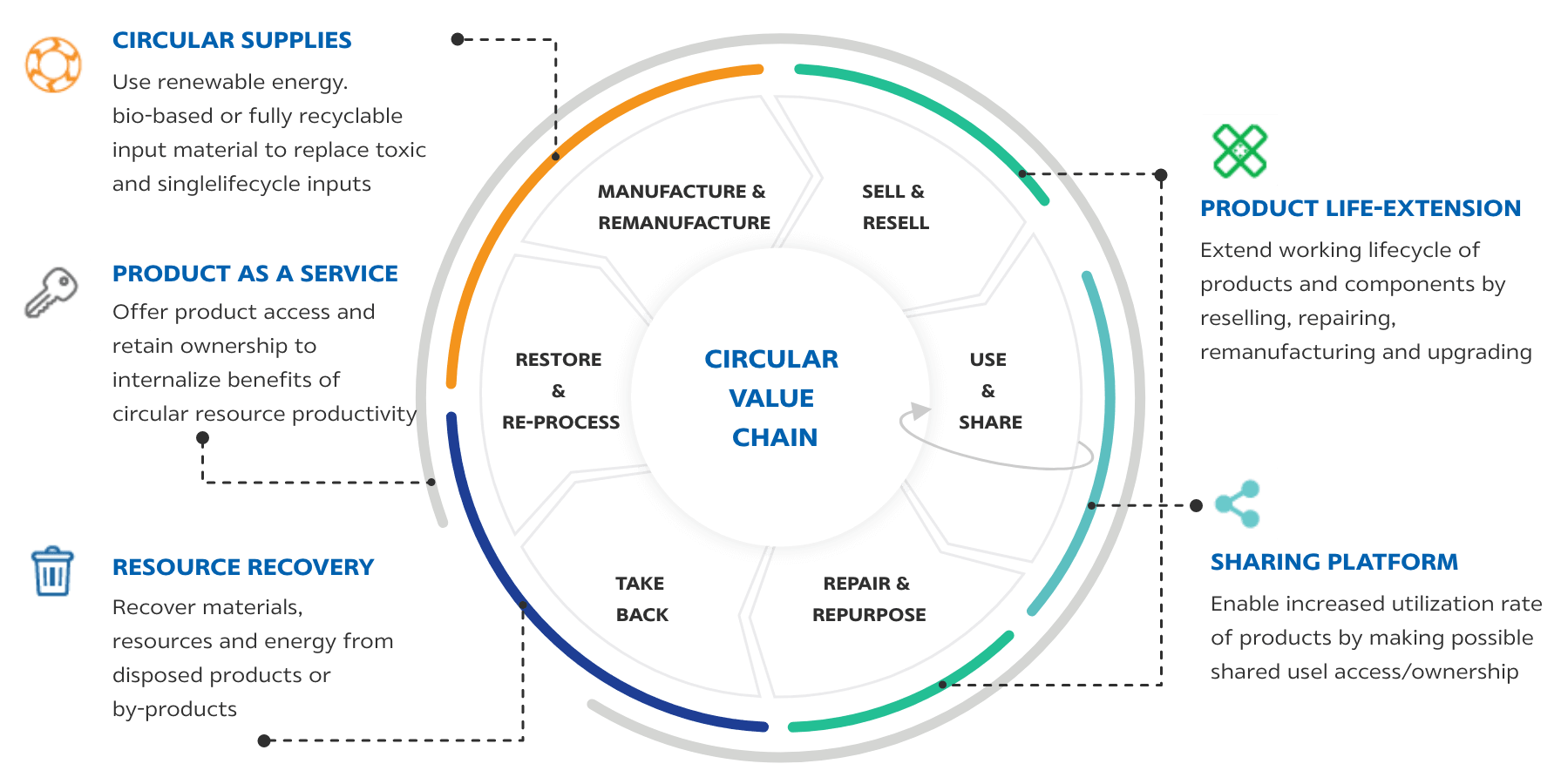
References : CEO GUIDE TO THE CIRCULAR ECONOMY, WBCSD
SCGP is committed to engineer packaging products through co-creation with customers, aspiring to achieve
100% recyclable, reusable, or compostable packaging by 2030.


The volume of recyclable, reusable, or compostable packaging from the volume of total packaging
99.7% from the volume of total packaging
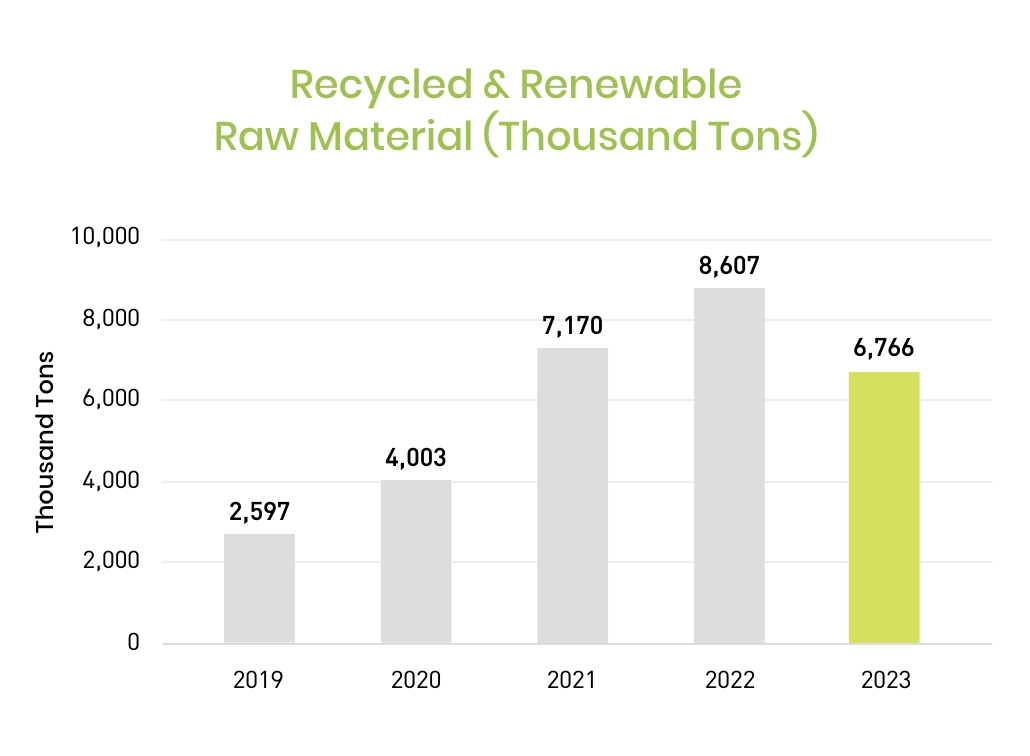



Service Solutions
SCGP Recycle is the Service Solutions provided to SCGP partners as a communication channel for accessing the services and information on the proper sorting of waste materials for complete recycling according to the Circular Economy principles. The wastes include paper waste, plastic waste, and other waste materials that can create value if properly managed. SCGP Recycle also provides advice, guidance for development, and improvement to understand handling waste materials correctly and efficiently.

SCGP Recycle has coordinated and cooperated with partners to develop the Ecosystem by providing more servicing channels to consumers, the "Drop Points" in various areas that increase consumers' convenience to bring waste materials back for recycling through the Circular Campaign - exchanging waste materials with new products such as A4 copy paper or paper furniture sets given to project participants to pass on to society or communities. In 2021 SCGP Recycle cooperated with governmental and business partners by joining the following activities -The reBOX postal Project of the Thai Post Co., Ltd. for the second time to transform unused boxes/sachets into medical supplies masks, setting up drop points at the 5 PT gas stations to receive waste paper and recycled water bottles, handling waste materials after the events at the BITEC Exhibition and Convention Center, joining Paper recycling Project of Phayathai Hospital Group, Paper Merci Project, Yak, Lak, Rak" of RS Public Company Limited, Recycled Waste Room Project of CW Tower, and Industrial Carton Recycling Project of Delta Electronics (Thailand) Public Company Limited, etc.



In 2021, waste paper materials totaling 561 tons were brought back to the recycling process. And In 2022, SCGP Recycle continues the ongoing projects with partners. In addition, SCGP Recycle also provides recycling waste material (paper and plastic) handling as a storage and delivery service provider by collecting and transporting waste material directly to the recycling plant for business partners such as CP ALL, Lotus, Home Pro, Central JD, Tops, Thai Watsadu, Villa Market, Lazada and Shopee, etc. Besides, the SCGP Recycle project helped to continue the ambition of green consumers; it could promote the Corporate images of Sustainable Development. The Project could be used as a reference in various standard reports to reflect the intention to improve the residents, employees, and communities quality of life through cooperation to create sustainability for society.
Products and Activities under Circular Economy
Activities
Across the value chain, SCGP business comprises:
- Upstream : Material Procurement by considering the use of recyclable materials, such as biodegradable materials or materials that have been previously used
- Operation : prioritize the use of valuable resources and incorporate the utilization of renewable energy sources to minimize waste generation
- Downstream : Product and service design aims to enhance efficiency by incorporating features that prolong the lifespan and improve the recyclability of used products
- Other Activities : SCGP collaborates with internal and external stakeholders to engage in non-business activities that promote the implementation of a circular economy across various sectors.
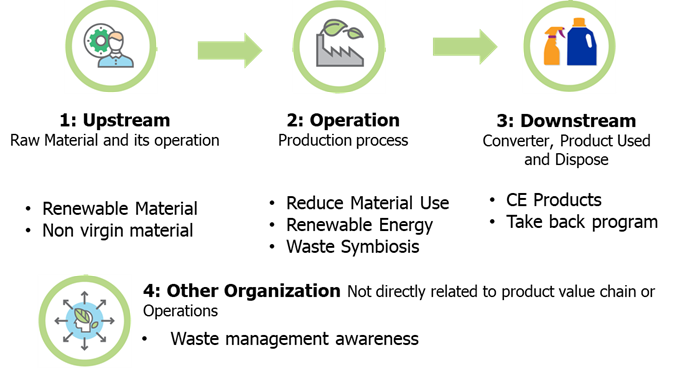
Figure 1: Example of Circular Economy Activities across value chain
Products
Across the manufacturing processes, SCGP Products should comprise at least one of these:
Designed for Disassembly
Product design focuses on creating products that can be easily disassembled and repaired once they reach the end of their lifespan.
Reduced Resource Use
Reducing the use of materials as raw materials or minimizing the consumption of natural resources pertains to various aspects, including:
- Production: Implementing efficient production processes that optimize material usage and minimize waste generation.
- Distribution: Optimizing logistics and supply chain management to reduce packaging materials and transportation-related environmental impacts.
- Packaging: Designing eco-friendly packaging solutions that use less material, are recyclable, or utilize sustainable alternatives.
- Services: Introducing digital or virtual alternatives to physical products or services to reduce material dependence.
- Consumer Behavior: Educating and encouraging consumers to adopt sustainable practices, such as recycling, reusing, and consuming responsibly.
Renewable Material Use
Products produced using recycled materials refer to materials that possess the characteristic of being regenerated anew in sync with their respective usage, such as bio-based materials.
Recyclable and Recycle content
Recyclable: Products that have the characteristic of being able to go through a process of recycling to be reused as raw materials compared to conventional products.
Recycle content or Non-Virgin material: Products that incorporate materials that have been used or waste from the manufacturing process and are recycled or utilize materials that have the capability to be reused as components in the production of goods or packaging.
Recovered Energy
The characteristic of products or services that utilize energy in their production or operation, which is derived from capturing and managing the energy that would otherwise be wasted or released.
Renewable Energy
The utilization of renewable energy sources such as wind power, solar energy, geothermal energy, or biomass energy in the production process.
Reduced Energy consumption
The reduction of energy consumption in the production process or the use of products when compared to the energy used in their production or usage in a similar manner.
Reduced Water Consumption
The reduction of water usage in the production process, including reducing the use of tap water, groundwater, and surface water.
Extended Life Product
Newly designed products are made to be durable throughout their lifespan, emphasizing resilience. However, there may be a need for design improvements to facilitate easier repairs, particularly by third party.
Reusable and Refillable
Products or packaging that are made to possess the characteristic or designed to be reusable within the product lifecycle or have features that allow them to be refilled with the same or similar product multiple times without the need for special cleaning or sanitation before reuse.
(Remarks: reuseable is an alternative spelling of reusable.)
Waste Reduction
Products that are manufactured using processes that reduce waste generation through various methods such as improving production processes, changing packaging containers, or incorporating features in the product that can reduce waste generated from other products when used.
Compostable
The characteristics of products, packaging, or components that can biodegrade under specific conditions and timeframes, including both biodegradation and photo degradation.
The reporting of product information and activities within the scope of Circular Economy
- List of Product Quantity, including SCG Green Choice, and Activities under Circular Economy (Accumulated Data)
- Monetary Value from Circular Economy Activities (e.g. Sales Revenue, Operation Cost Savings, Revenue from Relevant Activities) calculated on the period 1 Jan-31 Dec every year if the project is not finished within year, provide only actual data
- Greenhouse Gas (GHG) Emission Reduction
Reporting Requirement: The reduced quantity of greenhouse gases through the implementation of circular economy projects throughout product life cycle
Guidance Explanation and Example: The calculation of greenhouse gas reductions from projects that adhere to the principles of circular economy can be determined by the difference between the total greenhouse gas emissions baseline and the post-project emissions throughout the product's life cycle. Various variables used in calculating the baseline and project emissions must be measured and recorded during the same time period.
Carbon reduction = Baseline emission - Project emission or = Difference of activity data (reduce) * emission factor 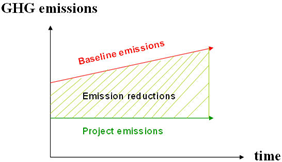
Figure 2: GHG Reduction Calculation Concept
- % Circularity Inflow & % Circularity Outflow
Guidance Explanation and Example:
% Circular Inflow total is calculated based on the quantity of raw materials used in the production of goods, sourced from both internal and external suppliers, excluding packaging, chemicals used in the production support system, water, and energy. The Circular Inflow is composed of two components:
- % Renewable inflow: The proportion of resources managed sustainably (based on internationally recognized standards) that are used and have a replenishment rate equal to or faster than the rate of usage. Examples include bio-feedstock and sustainably grown timber.
- % Non-virgin or Recycled Inflow: The proportion of materials that have been previously used and are utilized as substitutes for virgin materials or natural resources. This includes materials from other production processes (rejected products or waste), recycled plastic (PCR, PIR), washed sludge residues, recovered paper scraps, and others used as alternatives to replace raw materials.
The % Circular Outflow total is calculated based on the quantity of related waste products from the production process (excluding waste from utility systems and maintenance) and excluding packaging. Circular Outflow consists of:
- % Recovery Potential: The potential of materials to be reintroduced into the value chain after the end of their technical or theoretical lifespan. This can be expressed as Full potential = 100%, No potential = 0, or some potential = X%.
- % Actual Recovery: The amount of materials that are actually returned to the value chain after leaving the organization's scope, after the end of their lifespan. If data is unavailable, representative data at the country or global level can be used.
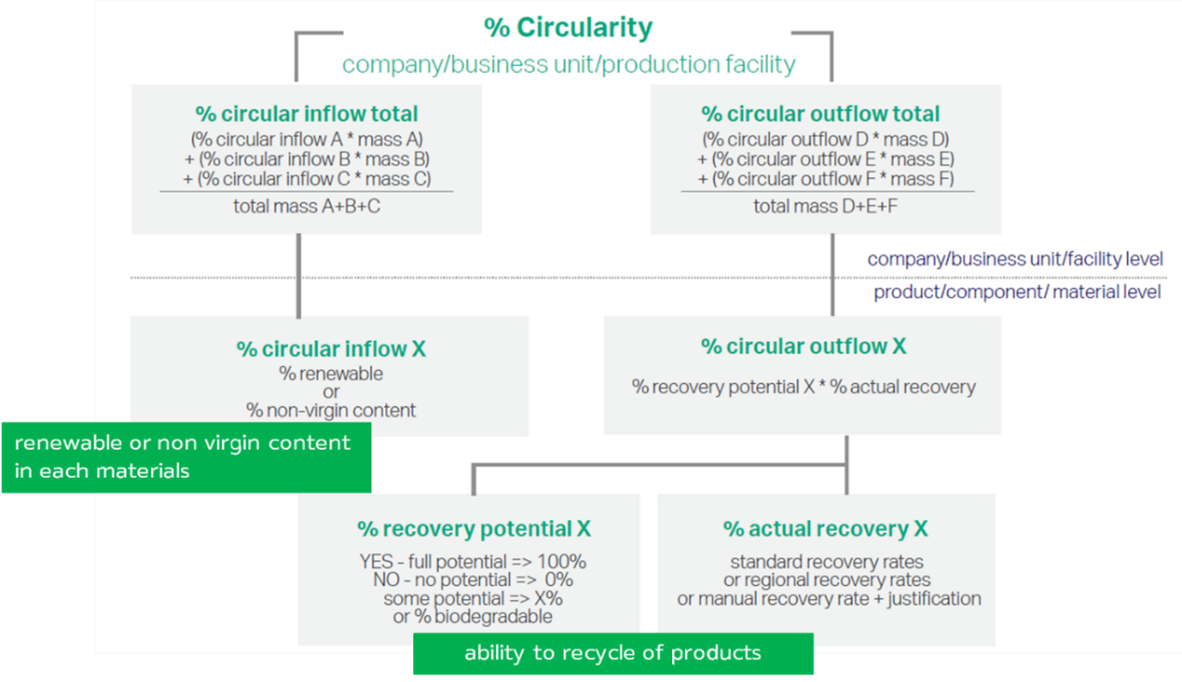
Figure 3: %Circularity (CTI 2.0)
